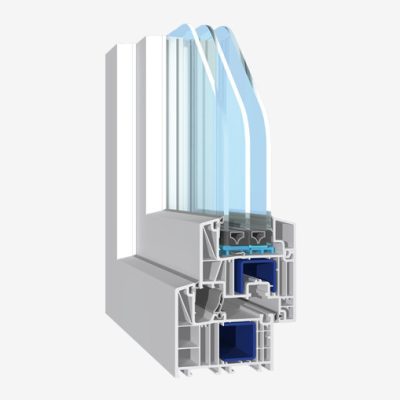Once you have chosen the right window, you also need to consider the optimal window sill. It often has not only a decorative function, as a shelf or a place to hold flowers or even a seat, but also a utilitarian one, trapping dust and directing warm air from the radiator. It is therefore important to choose the right material, shape and colour to fulfil these functions.
Plastic window sills are the most common option for finishing the area under windows in city apartments. It is the same material as the window profile. The air chambers used in the PVC profile create stiffeners that ensure durability. The advantages of PVC window sills are that they are completely resistant to moisture and relatively resistant to sunlight, which is why they can be used both indoors and outdoors. PVC has a high thermal index, which makes window sills made of this material pleasant to the touch, as well as strong and durable. With skilful use, the lifespan of these elements can reach 30 to 50 years. One of the most important features is the low price and availability in a wide range of sizes and colours. In addition to plain white, they can be any colour, and they can also imitate natural materials such as stone or wood with a glossy or matte surface.
Unfortunately, this material has a few disadvantages in addition to its advantages. For example, cheap materials may contain formaldehyde in their chemical composition. The vapours of formaldehyde can be harmful to human health. There is also a load limit: windowsills with few reinforcements cannot support very heavy objects, and you cannot sit or stand on them. Usually, when choosing PVC windowsills, we have to reckon with the fact that we are unlikely to achieve the same aesthetic effect as when using natural materials. Read also: Postforming window sills are very tightly compressed chipboard panels covered with decorative laminate. The underside of the window sill is covered with anti-shrink paper, which protects the window sill from moisture and additionally strengthens its structure. The laminate used to cover windowsills is resistant to dents, scratches and abrasion. This is a very important and desirable feature for windowsills. You can safely place flowers on such a windowsill without worrying that the surface will be damaged by the pot holders. The laminate covering the windowsill is also resistant to water and UV radiation, so that the colours or patterns used will not fade over time. These features make windowsills very easy to care for and keep clean. The fact that post-formed window sills are available in many colours and various patterns imitating natural stone or wood means that they can be successfully matched to any interior. A relatively low price is a significant advantage of sills made using this method, especially when compared to the aesthetics of the workmanship. Indoor postformed window sills are ideal for both residential and public buildings due to their damage resistance. The sides of the windowsills are finished with a side moulding in the colour of the windowsill. For some people, this type of finish is very aesthetically pleasing. However, others find it very unattractive and consider it a major disadvantage. Read also:PVC window sills
Advantages
Disadvantages
Postforming window sills
Advantages
Disadvantages
PVC or post-forming windowsills?
Polecane produkty

Salamander Bluevolution 73

Salamander Bluevolution 82

